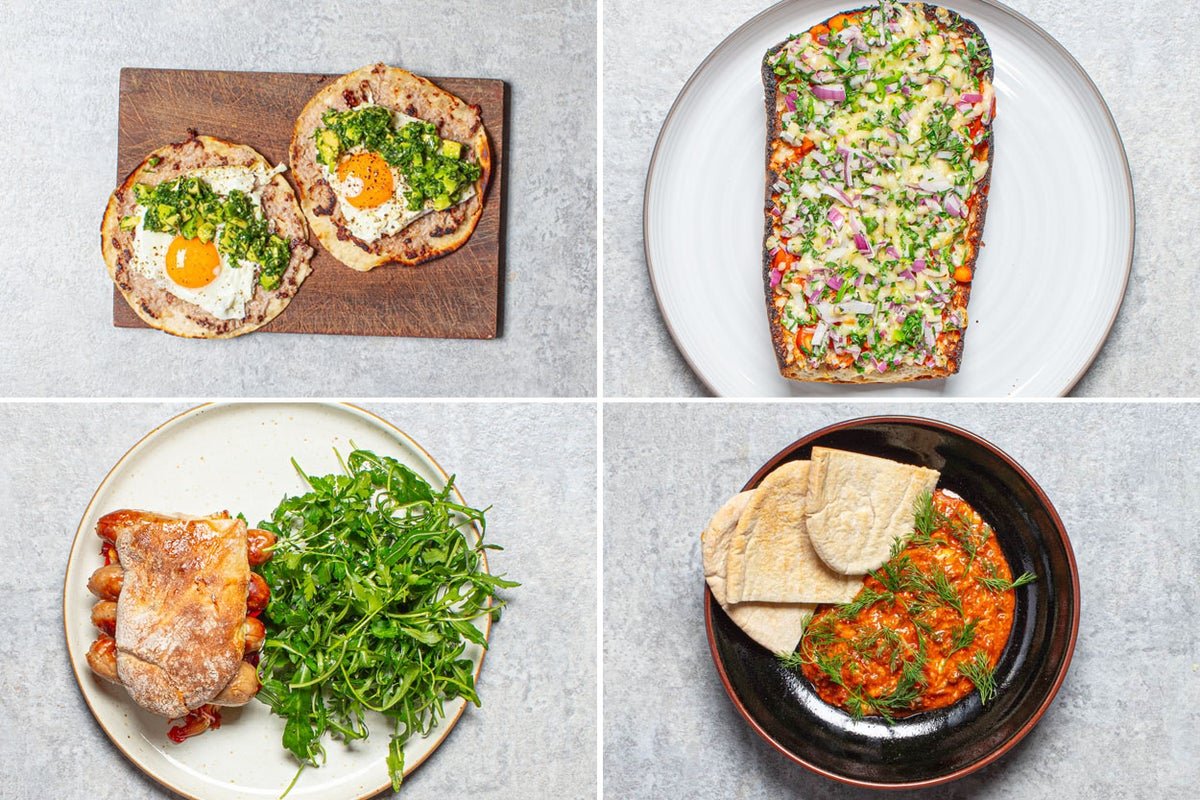So you sit at a desk all day, barely move, and by the time you’re done working, the only thing you want to lift is your dinner plate. If that sounds like your reality, you’re not alone—and you’re not doomed either. Because there’s a sneaky little wellness rule floating around the internet that just might be your shortcut to feeling lighter, sharper, and more energetic, without overhauling your entire life.Enter the 30-30-30 rule. It’s been making waves on social media, especially among office-goers, night owls, and even gym skeptics who want results without the overwhelm. And the best part? It’s not a diet, it’s not a workout plan, and it’s definitely not a scammy product. It’s just a method—simple, structured, and surprisingly effective.But does it really work? Let’s unpack it.
What is the 30-30-30 rule?
The rule is straightforward enough to remember without a sticky note on your fridge. Eat 30 grams of protein within 30 minutes of waking up, then do 30 minutes of low-intensity movement.That’s it. No counting carbs, no weird shakes, no 5 a.m. workouts. The idea is to kickstart your metabolism, keep your blood sugar stable, and prime your body to burn fat.The 30-30-30 rule first went viral due to weight loss expert and TikTok favorite Gary Brecka a self-described “human biologist” and “biohacker” podcaster, as says TODAY, who swears by this routine for regulating insulin and building sustainable habits. Unlike extreme diets or punishing workouts, this method works with your biology, not against it. And for people who spend most of the day sitting, that’s a game-changer.

Why the protein part actually matters
Most people start their day with carbs—toast, cereal, tea biscuits, or worse, nothing at all. The problem? That spike in blood sugar from carbs (or that drop from skipping food entirely) messes with your energy and your fat-burning ability for the rest of the day.Protein, on the other hand, tells your body to stabilize. When you start your morning with a solid 30 grams of protein—say, a couple of eggs, some Greek yogurt, or a quick protein shake—you’re setting up your metabolism to hum along steadily, without those nasty crashes or cravings that lead to overeating later.It’s not just about weight loss either. High-protein mornings have been linked to better concentration, improved muscle retention, and even fewer mood swings. And if you’re constantly dragging yourself through that 3 p.m. slump? You might find that changes too.
The 30-minute walk that counts more than you think
We’re not talking about intense HIIT sessions or sprinting on a treadmill. A brisk walk, some stretching, a casual jog on the spot—these are all fair game. It’s about getting your body moving, gently but consistently, while your blood sugar is low and your insulin is working in your favor.When you combine fasted movement with protein-rich fuel, you teach your body to become more efficient at burning fat instead of clinging to it. Studies have shown that even low-intensity movement early in the day can improve insulin sensitivity, boost circulation, and promote better digestion.For office-bound folks who tend to move less as the day drags on, this half-hour becomes even more critical. Think of it as your morning momentum. Even if you sit all day after that, you’ve already done something kind for your metabolism.
The hidden health benefits that no one talks about
Sure, there are weight loss benefits. But let’s talk about the hidden wins that make people stick to the 30-30-30 rule long-term.First off, it builds discipline without feeling like a punishment. Unlike rigid meal plans or two-hour gym marathons, this rule fits into real life. You wake up, you eat something high-protein, you move a little, then you get on with your day. No calorie counting, no drama.Second, it gives you back control. So many people feel defeated by wellness trends that require too much too fast. The 30-30-30 rule is the opposite. It’s a small pivot in your routine that delivers daily proof: Yes, your body can change. Yes, it can feel better. Yes, you can do this.And finally, there’s the mental health lift. A protein-rich breakfast can reduce anxiety and improve mood regulation. Low-intensity movement in the morning helps balance cortisol (your stress hormone) and releases feel-good chemicals that stay with you through the day. You’re not just becoming leaner—you’re becoming more emotionally steady.
Is it too good to be true?
Look, no rule is perfect. If you’re a night-shift worker or someone who wakes up already rushed, fitting in a full 30-30-30 might take some planning. And if you have dietary restrictions, hitting 30 grams of protein first thing might feel like a stretch. But with a little adaptation—say, prepping overnight oats with protein powder or doing light stretches instead of a walk—you can still make it work.Also, if you’re dealing with any medical conditions, especially diabetes or metabolic issues, it’s smart to check in with a professional before diving in.
Small rule, big results
Here’s what makes the 30-30-30 rule worth a try: it respects your time, your reality, and your biology. No hype, just a habit that aligns with how your body actually works.If you’re someone who stares at a screen all day and ends your day too tired to change anything, this might be the one small move that changes everything. Because when your mornings start with stability—nutritionally and physically—your whole day benefits.And sometimes, that’s all it takes. A solid start. A protein shake. A 30-minute stroll. And the reminder that getting fit doesn’t have to mean flipping your life upside down—it just means showing up, one small rule at a time.Disclaimer:The content in this article is intended for informational and educational purposes only and should not be considered a substitute for professional medical advice, diagnosis, or treatment. Always consult your physician or a qualified healthcare provider before starting any diet, supplement, fitness, or health program.
var _mfq = window._mfq || [];
_mfq.push([“setVariable”, “toi_titan”, window.location.href]);
!(function(f, b, e, v, n, t, s) {
function loadFBEvents(isFBCampaignActive) {
if (!isFBCampaignActive) {
return;
}
(function(f, b, e, v, n, t, s) {
if (f.fbq) return;
n = f.fbq = function() {
n.callMethod ? n.callMethod(…arguments) : n.queue.push(arguments);
};
if (!f._fbq) f._fbq = n;
n.push = n;
n.loaded = !0;
n.version = ‘2.0’;
n.queue = [];
t = b.createElement(e);
t.async = !0;
t.defer = !0;
t.src = v;
s = b.getElementsByTagName(e)[0];
s.parentNode.insertBefore(t, s);
})(f, b, e, ‘https://connect.facebook.net/en_US/fbevents.js’, n, t, s);
fbq(‘init’, ‘593671331875494’);
fbq(‘track’, ‘PageView’);
};
function loadGtagEvents(isGoogleCampaignActive) {
if (!isGoogleCampaignActive) {
return;
}
var id = document.getElementById(‘toi-plus-google-campaign’);
if (id) {
return;
}
(function(f, b, e, v, n, t, s) {
t = b.createElement(e);
t.async = !0;
t.defer = !0;
t.src = v;
t.id = ‘toi-plus-google-campaign’;
s = b.getElementsByTagName(e)[0];
s.parentNode.insertBefore(t, s);
})(f, b, e, ‘https://www.googletagmanager.com/gtag/js?id=AW-877820074’, n, t, s);
};
function loadSurvicateJs(allowedSurvicateSections = []){
const section = window.location.pathname.split(‘/’)[1]
const isHomePageAllowed = window.location.pathname === ‘/’ && allowedSurvicateSections.includes(‘homepage’)
const ifAllowedOnAllPages = allowedSurvicateSections && allowedSurvicateSections.includes(‘all’);
if(allowedSurvicateSections.includes(section) || isHomePageAllowed || ifAllowedOnAllPages){
(function(w) {
function setAttributes() {
var prime_user_status = window.isPrime ? ‘paid’ : ‘free’ ;
var geoLocation = window?.geoinfo?.CountryCode ? window?.geoinfo?.CountryCode : ‘IN’ ;
w._sva.setVisitorTraits({
toi_user_subscription_status : prime_user_status,
toi_user_geolocation : geoLocation
});
}
if (w._sva && w._sva.setVisitorTraits) {
setAttributes();
} else {
w.addEventListener(“SurvicateReady”, setAttributes);
}
var s = document.createElement(‘script’);
s.src=”https://survey.survicate.com/workspaces/0be6ae9845d14a7c8ff08a7a00bd9b21/web_surveys.js”;
s.async = true;
var e = document.getElementsByTagName(‘script’)[0];
e.parentNode.insertBefore(s, e);
})(window);
}
}
window.TimesApps = window.TimesApps || {};
var TimesApps = window.TimesApps;
TimesApps.toiPlusEvents = function(config) {
var isConfigAvailable = “toiplus_site_settings” in f && “isFBCampaignActive” in f.toiplus_site_settings && “isGoogleCampaignActive” in f.toiplus_site_settings;
var isPrimeUser = window.isPrime;
var isPrimeUserLayout = window.isPrimeUserLayout;
if (isConfigAvailable && !isPrimeUser) {
loadGtagEvents(f.toiplus_site_settings.isGoogleCampaignActive);
loadFBEvents(f.toiplus_site_settings.isFBCampaignActive);
loadSurvicateJs(f.toiplus_site_settings.allowedSurvicateSections);
} else {
var JarvisUrl=”https://jarvis.indiatimes.com/v1/feeds/toi_plus/site_settings/643526e21443833f0c454615?db_env=published”;
window.getFromClient(JarvisUrl, function(config){
if (config) {
const allowedSectionSuricate = (isPrimeUserLayout) ? config?.allowedSurvicatePrimeSections : config?.allowedSurvicateSections
loadGtagEvents(config?.isGoogleCampaignActive);
loadFBEvents(config?.isFBCampaignActive);
loadSurvicateJs(allowedSectionSuricate);
}
})
}
};
})(
window,
document,
‘script’,
);
#rule #weight #loss #Real #health #benefits #people #sit #day



